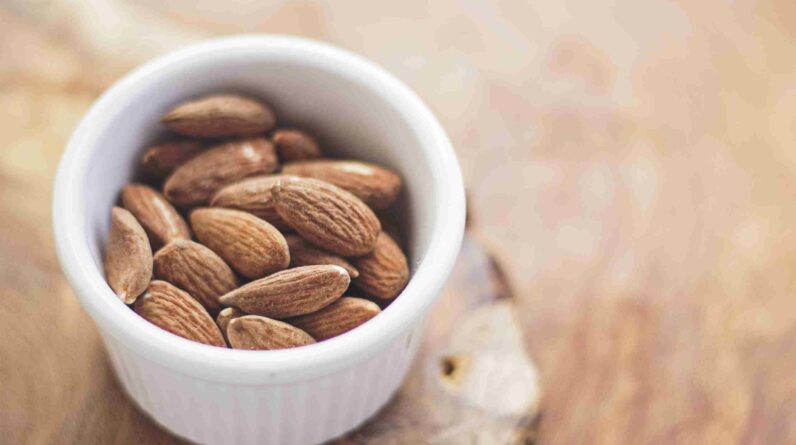As we go about our daily lives, convenience often plays a significant role in our choices. One such convenience is the ability to quickly heat up food in the microwave. However, a question that commonly arises is whether it is safe to use plastic containers in this cooking method. In this article, we will explore the potential risks and benefits associated with using plastic containers in the microwave, shedding light on this topic and providing you with the necessary information to make informed decisions about your kitchen practices.

Overview of Microwave-Safe Plastics
Understanding microwave-safe plastic
Microwave-safe plastics are specifically designed and tested to withstand the heat generated by microwaves without melting or releasing harmful chemicals. These plastics are made from materials that do not react with the food or beverages placed inside them. It is important to note that not all plastics are microwave-safe, and using the wrong type of plastic can pose risks to both our health and the integrity of the container and microwave itself.
Different types of microwave-safe plastics
Several types of plastics are generally considered safe for use in the microwave. These include polypropylene (PP), high-density polyethylene (HDPE), low-density polyethylene (LDPE), and polyethylene (PE). These plastics have high heat resistance and are not known to release harmful chemicals when heated. They are commonly used in microwaveable food containers, storage containers, and microwave-safe wraps and covers.
Potential Risks of Using Non-Microwave-Safe Plastics
Chemical leaching
One of the main risks associated with using non-microwave-safe plastics is chemical leaching. When plastic containers are exposed to high temperatures in the microwave, chemicals from the plastic can leach into the food or beverage inside. These chemicals, such as bisphenol A (BPA) and phthalates, have been linked to various health issues, including hormonal disruptions, reproductive problems, and certain types of cancer.
Release of harmful substances
Non-microwave-safe plastics can release harmful substances when heated, potentially contaminating the food or beverage being heated. These substances may include toxic gases, dyes, or additives present in the plastic. Ingesting or inhaling these substances can have negative effects on our health.
Damage to the container and microwave
Using non-microwave-safe plastics can also cause damage to the container and the microwave itself. Non-microwave-safe plastics may melt or warp when exposed to high temperatures, leading to potential leaks, spills, or even fires. In addition, the heat generated by these plastics can cause the microwave to malfunction or become damaged.
Microwave-Safe Symbols and Codes
Understanding the microwave-safe symbols
Microwave-safe plastics are commonly labeled with unique symbols that indicate their suitability for use in the microwave. These symbols are usually found on the bottom or side of the container and serve as a guide for consumers. The most recognized symbol for microwave-safe plastics is a square box with wavy lines inside it, indicating that the plastic is safe for use in the microwave. It is important to check for these symbols before using plastic containers in the microwave to ensure their safety.
Decoding plastic recycling codes
Plastic containers also often feature recycling codes, which can provide some information about the type of plastic used. However, it is important to note that these codes do not necessarily indicate microwave safety. The most common recycling codes found on plastics include numbers 1 through 7, along with their corresponding resin identification symbols. While some of these plastics may be microwave-safe, others are not and should be avoided.
Specific Plastics to Avoid in the Microwave
Polyvinyl chloride (PVC)
Polyvinyl chloride, or PVC, is a type of plastic that should never be used in the microwave. When PVC is heated, it can release toxic chemicals called dioxins, which are known to be carcinogenic. In addition to the health risks, PVC can also melt or warp when exposed to the high temperatures of the microwave, making it unsuitable for use.
Polystyrene (PS)
Polystyrene, commonly known as Styrofoam, is another plastic that should be avoided in the microwave. When heated, polystyrene can release harmful substances, including styrene, which has been linked to respiratory issues, neurological effects, and even cancer. It is best to transfer food from polystyrene containers to microwave-safe alternatives before heating.
Polycarbonate (PC)
Polycarbonate plastics, which are often transparent and hard, should be avoided in the microwave. These plastics can release bisphenol A (BPA) when heated, which is a chemical associated with various health problems. To ensure safety, it is recommended to use alternatives to polycarbonate containers in the microwave.
Polyethylene terephthalate (PETE) beverage bottles
While polyethylene terephthalate (PETE) bottles are generally safe for storing beverages, they are not considered suitable for use in the microwave. The heat generated in the microwave can cause the bottle to melt or release harmful chemicals into the drink. It is best to transfer the beverage to a microwave-safe container before heating.
Other non-microwave-safe plastics
In addition to the specific plastics mentioned above, it is important to avoid using any plastic containers that are not labeled as microwave-safe. These may include plastics labeled with recycling codes 3, 6, or 7, as they may release harmful chemicals or melt when exposed to high temperatures.

Types of Plastics Generally Considered Microwave-Safe
Polypropylene (PP)
Polypropylene (PP) is a commonly used plastic that is known for its high heat resistance and stability. It does not release harmful chemicals when heated and is therefore considered microwave-safe. PP plastics are often used in microwaveable food containers, such as those used for reheating leftovers or storing pre-cooked meals.
High-density polyethylene (HDPE)
High-density polyethylene (HDPE) is another plastic that is considered safe for use in the microwave. It is a versatile and durable plastic that can withstand the high temperatures of the microwave without melting or leaching harmful chemicals. HDPE is often used in microwave-safe storage containers and packaging.
Low-density polyethylene (LDPE)
Low-density polyethylene (LDPE) is similar to HDPE in terms of its safety for microwave use. LDPE has a lower melting point compared to HDPE, making it suitable for short microwave heating times. It is commonly used in microwave-safe plastic wraps, bags, and covers.
Polyethylene (PE)
Polyethylene (PE) is a general term that encompasses both HDPE and LDPE. It refers to a category of plastics that are safe for use in the microwave. PE is known for its heat resistance and low chemical reactivity, making it a reliable choice for microwave-safe containers and wraps.
Tips for Microwaving Plastic Containers Safely
Check for microwave-safe labeling
Before using any plastic container in the microwave, it is essential to check for microwave-safe labeling. Look for the square box with wavy lines inside it, indicating that the plastic is safe for use in the microwave. If there is no specific labeling, it is best to assume that the container is not microwave-safe and choose an alternative option.
Avoid using old or damaged plastic containers
It is important to avoid using old or damaged plastic containers in the microwave. Over time, plastic can become scratched or damaged, making it more prone to leaching harmful chemicals into food or melting in high heat. Inspect the containers for any cracks, warping, or discoloration, and replace them if necessary.
Use microwave-safe covers or vented lids
When using plastic containers in the microwave, it is advisable to use microwave-safe covers or vented lids. These help trap steam and heat, ensuring even heating and preventing splatters. Make sure the covers or lids are specifically labeled as microwave-safe to avoid any risks.
Transfer food to microwave-safe glass or ceramic containers when unsure
If unsure of the microwave safety of a plastic container, it is best to transfer the food or beverage to a microwave-safe glass or ceramic container. Glass and ceramics are known for their heat resistance and do not release harmful chemicals when heated. This provides a safe alternative when in doubt.
Follow manufacturer’s instructions
Always follow the manufacturer’s instructions when using plastic containers in the microwave. Different brands and types of plastic may have specific guidelines or limitations, and it is essential to adhere to them for safe and effective use.
Practice caution with certain foods
Some foods, such as those high in fat or sugar content, can generate more heat when microwaved. It is important to exercise caution when heating these foods in plastic containers, as the increased heat can potentially affect the integrity of the plastic or release harmful substances. Consider using microwave-safe glass or ceramic containers for such foods to avoid any risks.

Alternatives to Plastic for Microwave Use
Glass containers
Glass containers are an excellent alternative to plastic for microwave use. They are microwave-safe, do not release any harmful chemicals when heated, and offer the added benefit of being transparent, allowing for easy monitoring of the food during heating. Glass containers are also durable and can be used for both cooking and storage purposes.
Ceramic containers
Ceramic containers are another safe and popular option for microwaving food. They are designed to withstand high heat and do not react chemically with the food being heated. Ceramic containers are available in various shapes and sizes and are suitable for cooking, reheating, and storing food.
Silicone containers
Silicone containers have gained popularity in recent years due to their flexibility, durability, and microwave-safe properties. Silicone is heat-resistant and does not release harmful chemicals when microwaved. Silicone containers often come with lids or covers, making them convenient for storing and reheating food.
Debunking Common Myths about Microwaving Plastic
Plastic releases harmful toxins when heated
One common myth about microwaving plastic is that it releases harmful toxins when heated. While it is true that certain non-microwave-safe plastics can release harmful substances, microwave-safe plastics are specifically designed to resist heat and do not leach harmful chemicals. When using microwave-safe plastics, there is no need to worry about toxins being released into the food.
Microwaving plastic causes cancer
Another misconception is that microwaving plastic causes cancer. However, there is no scientific evidence to support this claim. Microwave-safe plastics are tested and approved to ensure they do not release carcinogenic substances when heated. It is important to use the correct microwave-safe plastics and follow proper usage guidelines to minimize any potential risks.
All plastic containers are microwave-safe
Contrary to popular belief, not all plastic containers are safe for use in the microwave. Each plastic type has different properties and tolerances to heat. Using the wrong type of plastic can lead to melting, release of harmful substances, or damage to the container and microwave. Always check for microwave-safe labeling or use alternative microwave-safe materials when unsure.

Research and Expert Opinions
FDA guidelines on microwaving plastics
The U.S. Food and Drug Administration (FDA) provides guidelines and regulations regarding the safety of plastics intended for use in the microwave. These guidelines ensure that microwave-safe plastics comply with specific criteria, including heat resistance and chemical stability. Following FDA guidelines and using microwave-safe plastics can help minimize risks associated with microwave use.
Scientific studies on plastic safety in the microwave
Numerous scientific studies have been conducted to assess the safety of plastic containers in the microwave. These studies have examined the potential release of chemicals, the effects on food quality, and the impact on human health. Although some studies have raised concerns about certain non-microwave-safe plastics, microwave-safe plastics have generally been found to pose minimal risks when used correctly.
Expert opinions and recommendations
Experts in the field of food safety and material science generally agree that using microwave-safe plastics is safe for daily use. However, experts also recommend using caution and common sense when using plastics in the microwave. It is important to choose the correct plastics, follow usage guidelines, and consider alternatives like glass or ceramic containers for added peace of mind.
Conclusion
In conclusion, using microwave-safe plastics can be a safe and convenient way to heat, cook, and store food in the microwave. Understanding the different types of microwave-safe plastics and their symbols can help us make informed decisions and minimize potential risks. It is essential to avoid using non-microwave-safe plastics, as they can release harmful chemicals, damage the container and microwave, or pose health risks. By following guidelines, transferring food to appropriate containers when unsure, and considering alternative materials like glass or ceramic, we can ensure safer microwave use. Always prioritize our health and well-being by choosing microwave-safe plastics and practicing caution when handling and heating food.










